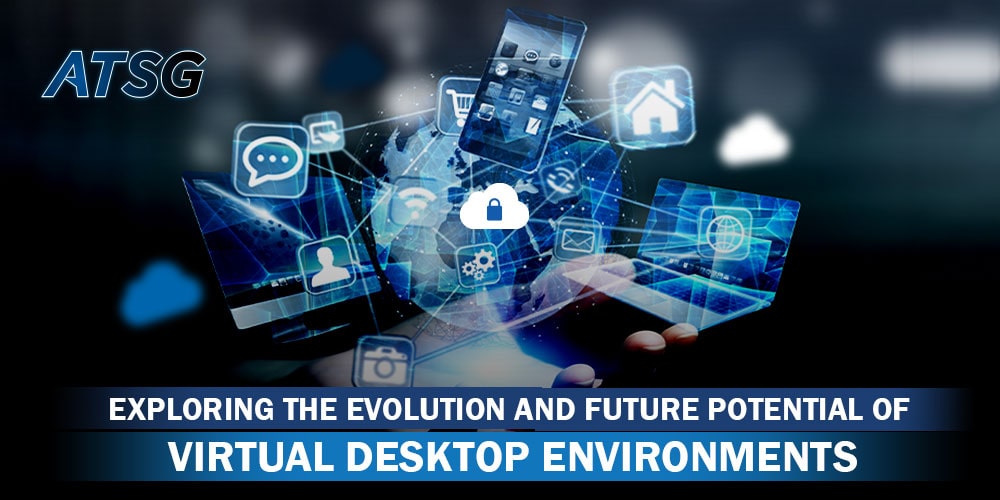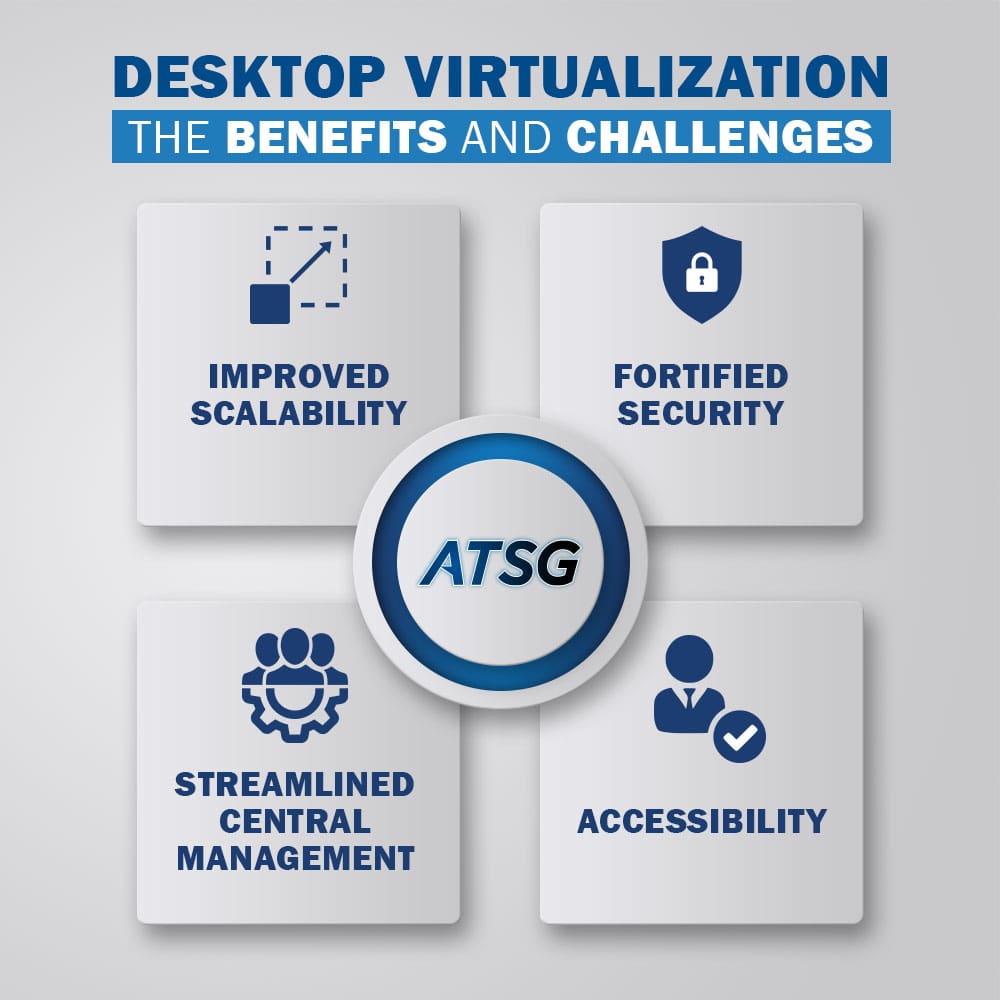In the not-so-distant past, situations like traveling across time zones for work, or facing critical file access issues in un-familiar locations, caused significant stress. Imagine the frustration when your backup files turned out to be corrupted, or persistently refused to download. Such events constitute the perfect recipe for stress, and wasted resources.
Fast forward to the present day, and the business landscape has undergone a transformative shift. Enter virtual desktop environments, a game-changer that has revolutionized how businesses operate. In essence, the evolution of virtual desktop infrastructure (VDI) and Cloud-based Desktop as a Service (DaaS) solutions has re-written the narrative for businesses, turning what was once a daunting challenge, into a triumph of efficiency and resilience.

Historical Overview of Virtual Desktops
Back in the 60s and early 70s, when the tech landscape was just beginning to explore its potential, the roots of virtualization were being established. Fast forward to early the 2000s, and a fresh wave of virtualization took over, resulting in the virtualization of everything, from servers and storage to compute and network capabilities.
Also, it is worth noting that during that time, acquiring and maintaining physical desktops was an investment that demanded substantial financial resources, as well as continuous maintenance. The costs were not solely limited to the initial purchase, as they also encompassed the ongoing expenditures for hardware upgrades, software updates, individual patching and troubleshooting. Not to mention the daunting and time-consuming task of managing diverse physical desktop environments across an organization.
To address these problems, some innovative minds began to host virtualized desktop processes, using central servers, which marked the birth of Virtual Desktop Infrastructure (VDI), and eventually led to Cloud-based Desktop as a Service (DaaS) solutions.
The Core Components and Architecture of Virtual Desktops
In order to fully grasp the concept of virtual desktop environments, let’s have a look their core components and architecture.
Servers
Servers are the backbone of a virtual desktop setup, and act like a control center that handles everything. There are primarily two types of servers involved.
- Hypervisor hosts are responsible for hosting and managing multiple virtual machines (VMs), each running an individual instance of an operating system (OS) and desktop environment.
- Then, we have connection brokers that act as intermediaries between end users and virtual desktop instances. They handle the assignment of virtual desktops to users, load balancing, and session management, ensuring users connect to their respective virtual desktop environments in a seamless manner.
Clients
Clients are the end-user devices that are essentially your “portal” to the virtual desktop universe. This involves endpoint devices, such as laptops, desktop computers, tablets or even smartphones, that users utilize to access their virtual desktop environments. These clients allow users to interact with their virtual desktops, as if they were physical computers.
Clients play a crucial role in making the virtual desktop experience feel seamless. They bring the virtualized environment to life, before your screen, whether you are writing an email, working on a project, or attending a virtual meeting.
Network
In the world of virtual desktops, network also plays a crucial role by linking users to centralized resources. Its job is to ensure smooth data transfer, quick response times, and a secure environment for remote desktop usage. Essentially, a strong network forms a “critical piece of the puzzle”, which keeps the entire virtual desktop setup running efficiently and dependably.
Desktop Virtualization – The Benefits and Challenges
Embracing the realm of virtual desktops brings forth a host of compelling advantages, each contributing to a streamlined and efficient digital workspace.

Improved Scalability
Cloud Computing solutions allow virtual desktops to “flex their muscles”, and effortlessly “expand or contract” in response to market demands. This new-found scalability not only optimizes resource utilization, but also liberates IT teams from the hassles of physical hardware maintenance.
Streamlined Central Management
The ability to deploy updates, patches and modifications across all virtual desktops simultaneously, through a centralized server, is a game-changer for IT administrators. This centralized approach significantly streamlines IT management tasks, freeing up valuable time and resources.
Fortified Security
Security stands tall as a key pillar of virtual desktops. Applications and sensitive data are no longer scattered across multiple employee endpoint devices. Instead, they reside within the fortified walls of a secure data center. This architectural choice provides a robust layer of protection against compromised devices.
Accessibility
Another huge selling point of virtual desktops or DaaS solutions is that they can be accessed from any location, at any time. This way, secure Bring Your Own Device (BYOD) culture establishes its foot-hold, allowing users to seamlessly access their “digital realms”, from virtually any location.
While the benefits of desktop virtualization are substantial, it is essential to acknowledge few potential challenges that also come with it. For instance, latency can occasionally disrupt a seamless user experience (UX), necessitating careful network management and optimization.
Furthermore, while VDI bolsters security, proactive measures are also extremely vital to address emerging security concerns. Yet, with the evolution of Desktop as a Service (DaaS), these challenges are being progressively addressed, enhancing the overall virtual desktop experiences for users.
Comparison with Traditional Desktops
When it comes to delivering smooth computing experiences, Desktop as a Service (DaaS) and traditional desktop setups follow different paths. DaaS takes you on a Cloud-powered journey, where virtual desktops are hosted remotely, saving you from the hassle of hardware maintenance.
In contrast, with traditional setups, there is a recurring need for local installations on your hardware. As expected, this demands a lot more maintenance. While both offer a “comfortable ride”, DaaS is a more futuristic and beneficial option for businesses, especially with its hassle-free approach, and the promise of smooth scalability.
Virtual Desktop Environments and Integration Possibilities
Virtual desktop environments have come a long way to seamlessly integrate with various technologies. One key integration avenue is with Cloud services. By merging virtualized desktops with a Cloud infrastructure, enterprises can achieve un-paralleled scalability, and enable users to access their virtual environments from anywhere, effectively breaking down geographical barriers. This integration also results in successful collaboration and data sharing among remote teams, for enhanced productivity.
In addition, the integration of virtual desktops with advanced security protocols, like multi-factor authentication (MFA), encryption and secure tunnels, will result in the protection of sensitive data, especially during transmission and storage. Such amalgamation of technologies empowers users to work confidently within a secure virtualized environment, while keeping their digital assets safe.
Future Trends in Virtual Desktop Technology
Back in 2021, Gartner made an intriguing forecast by predicting that the adoption of desktop as a service (DaaS) solutions would surge by over 150%, from 2020 to 2023. Now, in 2023, it is time to assess the accuracy of these predictions, and delve into the implications they hold for the future tech landscape of desktop virtualization.
Looking into the near future, virtual desktop technology is all set to undergo a fascinating transformation, by embracing Artificial Intelligence (AI) driven enhancements. This technology will be so intuitive that it will anticipate and adjust to your unique work habits, and will make your experiences truly customized.
Since all these immersive technologies are on the rise, the future of Desktop Virtualization looks exciting, and filled with endless possibilities.
Un-lock tremendous efficiency and scalability with ATSG’s DaaS solutions; the ultimate answer to cost-efficient and effortlessly managed Cloud Hosted Virtual Desktops.
ATSG’s DaaS solutions can digitally transform your enterprise, without “breaking the bank”. Contact Us, and step into the future with our streamlined deployment of enterprise grade IT resources, coupled with hassle-free management.




